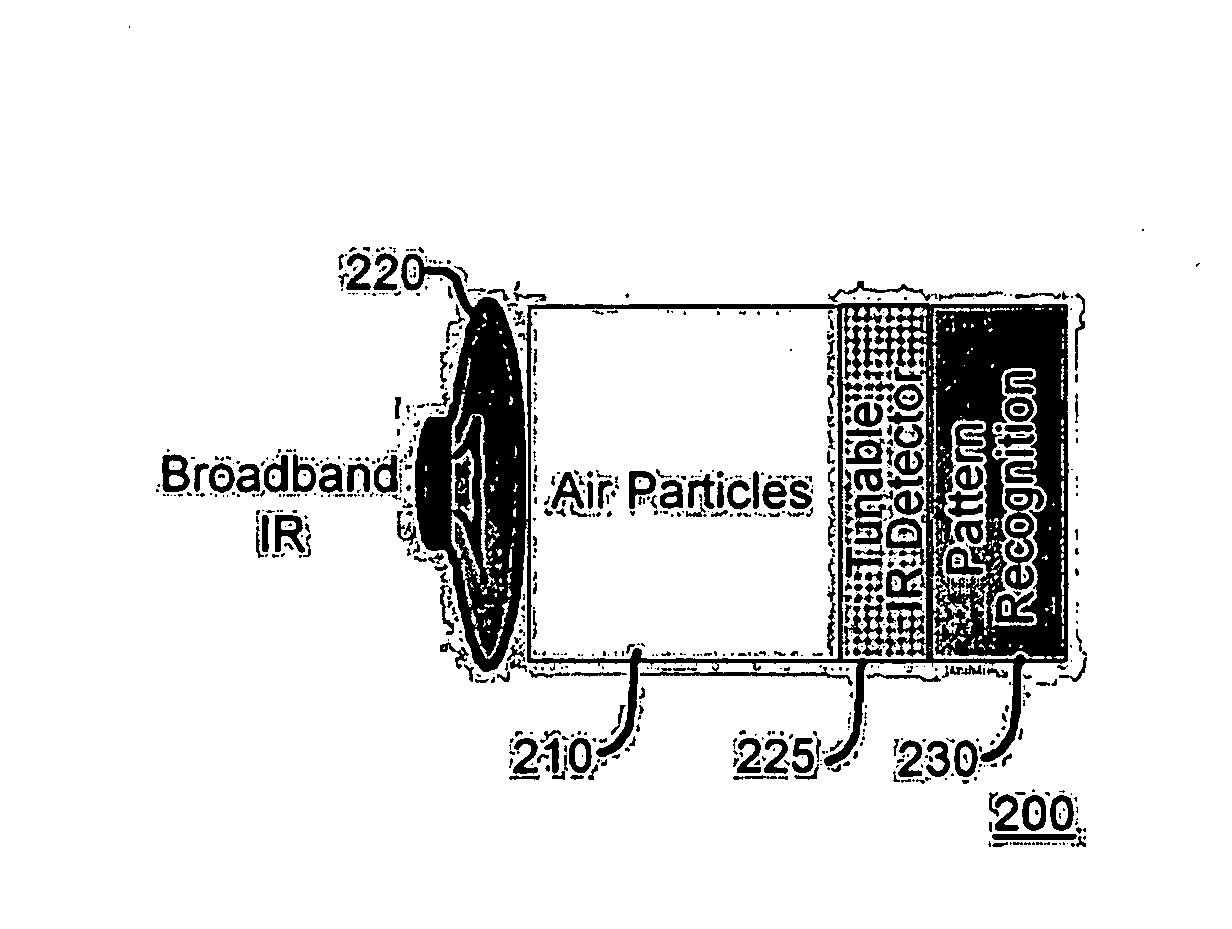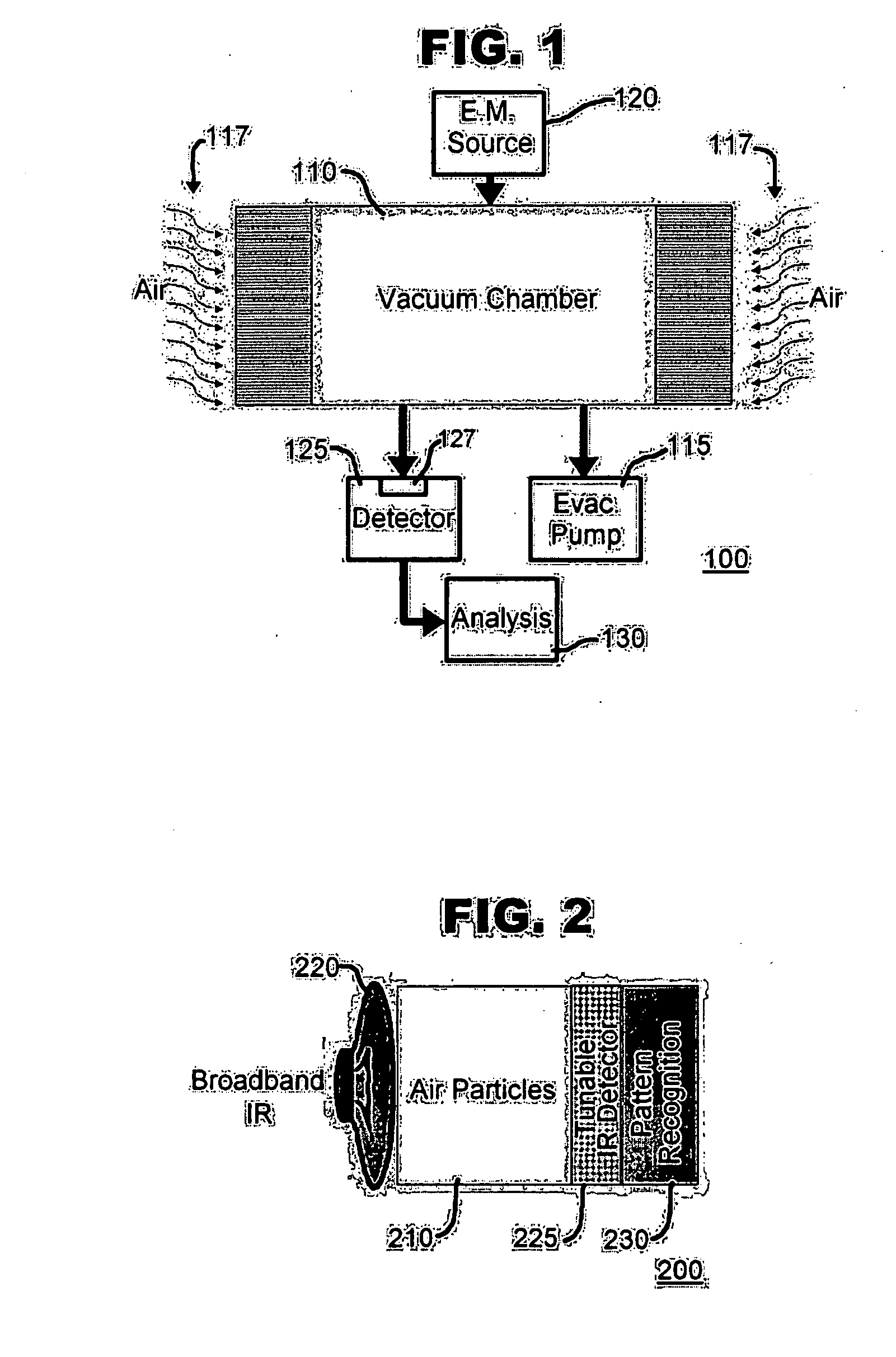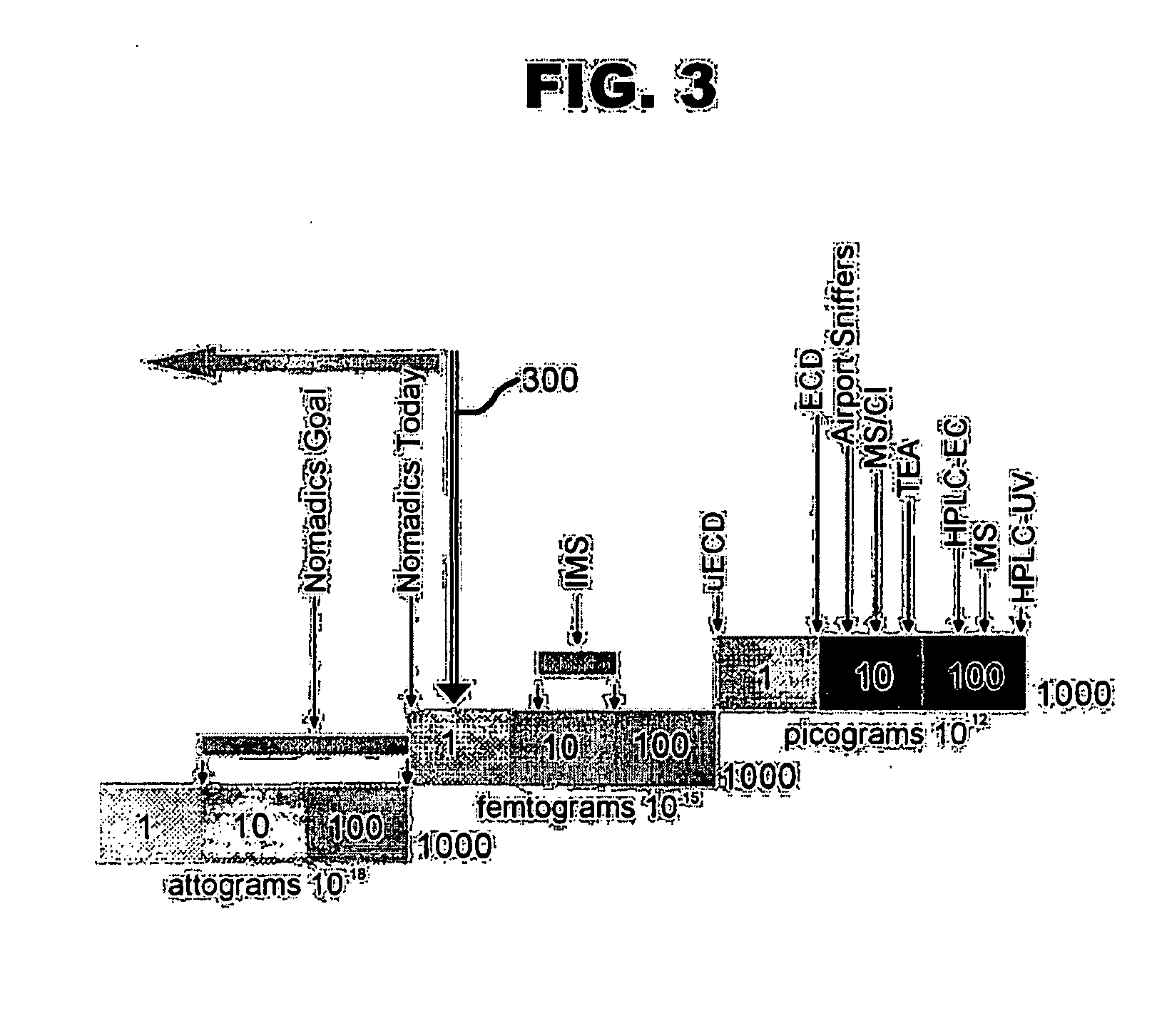Portable mems-based spectral identification system
a spectral identification and portable technology, applied in the field of chemical sensing systems, can solve the problems of reducing efficiency, requiring significant human intervention, and not being portable, and achieve the effects of reducing detection time, reducing power, size and cost of detection devices, and increasing sensitivity
- Summary
- Abstract
- Description
- Claims
- Application Information
AI Technical Summary
Benefits of technology
Problems solved by technology
Method used
Image
Examples
Embodiment Construction
[0038]FIG. 1 is a simplified schematic and function block representation of a specific illustrative embodiment 100 of the invention. In this embodiment, the infrared spectrum is employed, and therefore is useful in the detection of compounds within chemical groups that have distinct absorption bands in the 2-15 μm wavelengths.
[0039]As shown in this figure, the specific illustrative embodiment of the invention is a detector arrangement 100 constructed in accordance with the principles of the invention. A vacuum chamber 110 is configured to receive ambient air at inlet ports 117. The ambient air is urged into the vacuum chamber by operation of an evacuation pump 115. As air is evacuated from vacuum chamber 110, the ambient air is drawn unto the vacuum chamber.
[0040]The ambient air is comprised of particles of interest, which may illustratively include molecules of ammonium nitrate, potassium nitrate, ammonium per chlorate, trinitrotoluene, cyclorimethylene trinitramine, pentaerythrito...
PUM
| Property | Measurement | Unit |
|---|---|---|
| wavelengths | aaaaa | aaaaa |
| electromagnetic energy | aaaaa | aaaaa |
| fluorescent | aaaaa | aaaaa |
Abstract
Description
Claims
Application Information
 Login to View More
Login to View More - R&D
- Intellectual Property
- Life Sciences
- Materials
- Tech Scout
- Unparalleled Data Quality
- Higher Quality Content
- 60% Fewer Hallucinations
Browse by: Latest US Patents, China's latest patents, Technical Efficacy Thesaurus, Application Domain, Technology Topic, Popular Technical Reports.
© 2025 PatSnap. All rights reserved.Legal|Privacy policy|Modern Slavery Act Transparency Statement|Sitemap|About US| Contact US: help@patsnap.com



